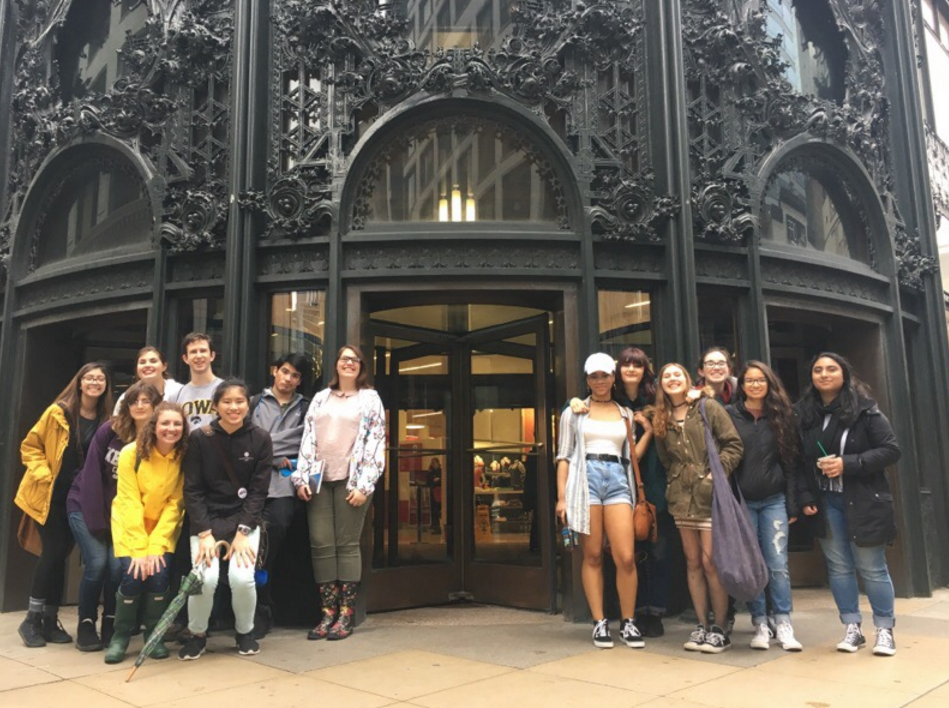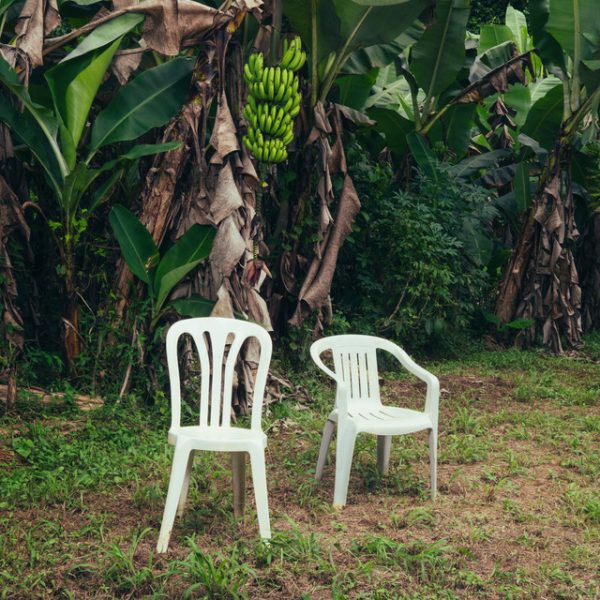AP Art History Students Learn about Chicago Sculptures

Mrs. Doyle and the AP Art History students (right) next to Picasso’s sculpture, “untitled.” This famous sculpture is also known as the Chicago Picasso. sculpture, “untitled”. This famous sculpture is also known as the Chicago Picasso.
Recently, the AP Art History class at Glenbard West took a field trip to downtown Chicago to get a tour of the variety of sculptures in the city. Most of these sculptures were created by artists who also created works that are a part of the AP Art History curriculum.
Mrs. Doyle, the only art history teacher in all four Glenbard schools, has been taking students on this field trip for eight years now. Mrs Doyle said that instead of going “on other docent-led trips that are organized through the fabulous Art Institute of Chicago and Chicago Architecture Foundation tours, I realized that Chicago didn’t offer a tour that specifically met the needs of my curriculum. So I wrote my own tour that completely aligns and becomes a student favorite year after year.”
Another perk of the tour was that the “self-written field trip doesn’t cost the students extra money because we are not having to pay for a docent-led tour. I’m the docent,” explained Mrs. Doyle.
A small yet adventurous group of fourteen students started out their journey with Monument with Standing Beast by Jean Dubuffet in the heart of Chicago–or more affectionately known by Chicagoans as “Snoopy in a blender.”
The group traipsed through the loop and downtown Chicago “oohing” and “ahhing” at each sculpture or building they saw. They even walked into the Carson Pirie Scott building designed by the famed architect Louis Sullivan, as the work was part of the AP curriculum.
For Jennifer Orozco, a senior in AP Art History, the best part of the field trip was “seeing the Winged Victory of Samothrace and just being able to experience it in person. It looked very powerful and full of energy which was amazing.”
According to Mrs. Doyle, there is “nothing more valuable when studying architecture and public sculpture than to see the pieces in their original environment,” as each piece was constructed with its location and surrounding buildings in mind.
This field trip for many of the students helped them, as Jennifer Orozco stated, “to see the sculptures in the places where the artist intended them to be and sort of have a deeper context about the piece.”
The last stop was the sculpture by Picasso. Led by Mrs. Doyle, the class walked onto the slope of the sculpture and took a selfie. Janel Beedle, another student, replied that her favorite part of the trip “was chilling in the Picasso-designed” sculpture.
“With modern art/architecture I find it hard to interpret the meaning and its importance, so going and learning the history of our city and certain artists helped me understand the art so much better,” said Janel.
Olivia Mullenax, another senior AP Art History student, said, “Seeing the artwork put them in context and we could interact with the pieces.”
This field trip was important for all of the students because “the experience of seeing pieces in person is so much more memorable than seeing them on a screen in the classroom,” Mrs. Doyle said.










